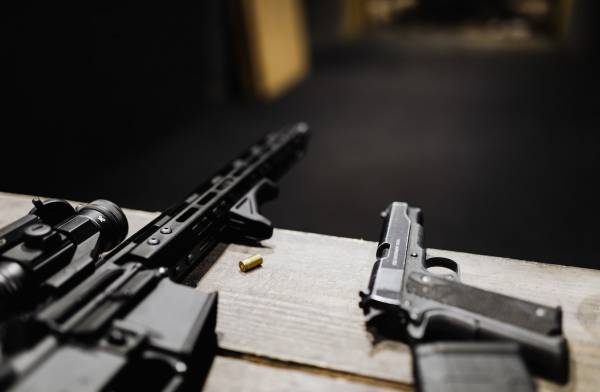Blog
Céline Dostaler
Content Categories
A ‘consistent’ definition of an assault-style weapon would benefit everyone

The federal government “wants to abandon its approach of spelling out each make and variety of banned firearm in lengthy lists” and instead provide a “clear, consistent” definition of assault-style firearms to be prohibited, according to a recent news report.
This is a very sensible change.
According to a government announcement early in May, Bill C-21 would “establish a new technical definition containing the characteristics of assault-style firearms, illegal in Canada.”
It adds that the new definition would be “forward-looking … meaning it would not apply to firearms currently on the market. It would be inserted into the Criminal Code and the Import Control List and apply to firearms designed and manufactured after the provisions come into force, so that firearms that exceed safe civilian use are not introduced into our communities.”
Bill C-21 is currently being reviewed by the House of Commons Standing Committee on Public Safety and National Security.
Three categories of firearms
So what are “assault-style” weapons? That is currently open for interpretation, according to a media report.
“The federal government’s marquee gun-control legislation simultaneously relies on three different definitions of what counts as an assault-style weapon, resulting in a tangle of banned firearms that experts are struggling to understand, and that the government has not fully explained,” the article states.
The report adds, “shotguns and rifles that aren’t banned under one section of amendments to the legislation, called Bill C-21, are banned in another.”
Considering this confusion, definitions that encompass new variants of weapons without specifically naming them are a good idea. If a new firearm comes out, how do consumers know if it is banned or restricted?
Client charged with having a sawed-off rifle
I am representing a client charged with possessing an illegal rifle. He resides in a rural area and he bought a firearm from someone he knew. Such private purchases are legal as long as both parties have a Possession and Acquisition Licence.
When I first saw the weapon it seemed like a regular rifle. It was only when I looked down the barrel that tell-tale marks indicating the barrel had been sawed off were evident. This is illegal, even though there were only a couple of inches of the barrel removed.
When my client and I started looking at other similar types of firearms, we found a legal one with a barrel just three inches longer than the gun he owned. His case, yet to go to trial, illustrates why we need clear language about what makes constitutes a prohibited weapon.
There are many firearms in Canada
According to a federal report, it is estimated that 26 per cent of Canadian homes have a firearm. Naturally, people living in rural areas are more likely to own a gun as they have to deal with invasive wildlife.
The report notes, “37.3 percent of respondents from small towns own a firearm compared to 2.8 percent in communities with populations over one million. Residents of small towns are also more likely to own long guns than people living in large cities: 33.6 percent compared to 1.2 percent respectively.”
A pig’s eye determines what is a firearm
In determining if a pellet gun should be considered a firearm that could cause “serious bodily injury or death,” the Ontario Court of Appeal in 2013 ruled that should be decided through a “pig’s eye test.” Because pigs’ eyes are similar in size and composition to human eyes, “any shot exceeding 214 ft./ s. was capable of causing serious injury. A BB shot travelling at this speed would penetrate the eye of a ten-month-old pig some of the time. A BB travelling at 246 ft./ s. would penetrate the eye 50 per cent of the time. The respondent's airgun thus exceeded both thresholds.”
The test was developed by the Firearms Section of the Forensic Laboratory for the Royal Mounted Canadian Police, with pellets shot at a distance of 10 feet into the corneas of pig eyes (from dead animals) with a pump-action BB gun.
Section 2 of the Criminal Code defines a "firearm" as a barrelled weapon that discharges projectiles capable of causing bodily harm or death, or anything that can be adapted as a firearm.”
Three categories of firearms
Firearms are currently divided into three categories in Canada: non-restricted, restricted and prohibited. According to information from the RCMP, a non-restricted weapon “includes any rifle or shotgun that is neither restricted nor prohibited. Most common long guns are non-restricted, but there are exceptions.”
Restricted firearms include:
- handguns and other firearms that are not prohibited firearms;
- those with a barrel less than 470 mm in length;
- those capable of discharging centre-fire ammunition in a semi-automatic manner;
- any weapon designed or adapted to be fired when reduced to a length of less than 660 mm by folding, telescoping or otherwise; and
- any firearm prescribed as restricted in the regulations.
Prohibited firearms in Canada include:
- handguns with barrels equal to or less than 105 mm in length;
- handguns designed or adapted to discharge a 25- or 32-calibre cartridge, not including handguns for use in international sporting competitions;
- firearms adapted from a rifle or shotgun, whether by sawing, cutting or any other alteration; and
- automatic firearms, whether or not altered to discharge only one projectile with one pressure of the trigger.
Contact me for assistance
Legislation governing the purchase, storage and use of firearms in Canada is continually evolving. If you are facing charges related to firearms or any other criminal matter, contact me for more information and a free consultation.
